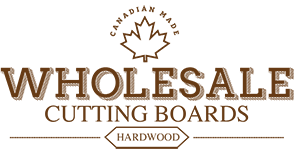What is the difference between a butcher block and a cutting board? Even though most people are not chefs, they may still want to know how to use various kinds of equipment and cooking tools properly. Therefore, for those of you who want to know the actually difference between the butcher block and the cutting board, here’s a little information that can assist you with identifying these distinctions and why they exist.
History of the Butcher Block
Typically, in order to respond to this question appropriately, there is a little background information that people should know first and that is about the initial use of the butcher block since it can be traced backed to China. Additionally, it is also important to note that the butcher block was also used in European countries for centuries as well. The name of the butcher block looks like it comes from the fact that its connects butcher’s meat with a block, which is meant to provide a sturdy base for the meat to be placed upon. Now, previously, before the name butcher block became so prevalent in use, the butcher could use virtually any thing to cut their meat into specific types of pieces. For instance, some people could simply make use of a tree stump, log round or a flat rock to chop their meat on. While this may have become a common practice, these types of surfaces could easily wreak havoc and damage on the knives that were used. Therefore, with this scenario in mind, the times have changed dramatically since the butchers block is now made up of a specific type of wood materials of varying shapes, sizes and dimensions (i.e. 18 x 12 x 2.25 or 24 x 18 x 2.25 and many more).
Distinctions Between Roles in the Kitchen
Now, that we have established what a butcher board is and where it came from, there is another major distinction that can be made between a butcher board and wholesale cutting boards. This distinction can be made based on the role that it plays in the kitchen. For instance, if the hardwood board is used in the kitchen to prepare vegetables or fruits in varying ways, it can be called a cutting board. In fact, with a cutting board, people are normally seen slicing, dicing, julienning, and chopping vegetables and fruits into certain sizes and shapes. However, when a maple board is used to for the preparation of different meats, it will be used for quartering and deboning chicken or filleting foods like fish. To be proficient in this kind of preparation, the weight and depth of the board will also determine its functionality. For instance, the weight of the butcher block is often much heavier so that the block will not slide and affect the preparation (i.e. chicken sliding off and becoming airborne).
End Grain vs Edge Grain
In addition to the role that the board plays in the kitchen, there is one tell tale sign that identifies each board properly, and that is to determine the grain of the board. In fact, based on creditable professionals in the industry all butcher block boards must be made of grain edge instead of edge grain.Edge grain can best be described as wood that has its end fibers exposed. End grain can best be described as wood that has its end fibers exposed, while edge grain is often described as the grain running along the outside. So, it is important to note that end grain is preferred to edge grain when it relates to choosing a butcher block. With this in mind, the major advantage of using end grain for a butcher block is that it resists scarring and cuts because the fibers will automatically push back into place. Also, end grain materials have the capability to even heal itself over time.
Trying to determine the difference between a butcher block and a cutting block is not always as simple as some people may think. However, the distinctions between each can be easily verified and confirmed with the use of the three following rules:
Wood board should be composed of end grain
Wood is at least 1.5” thick
Wood has a diameter that is large enough to handle a variety of meats (i.e. 12 x 12 surface).
All of which are provided to make it easy to make a quick distinction between a butcher block and cutting board.
